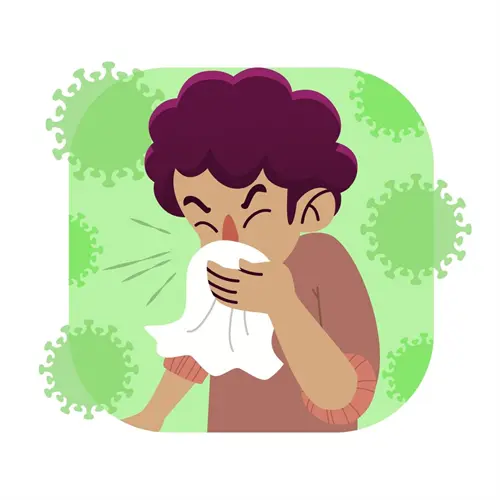Preventive Healthcare
Vasovagal Syncope: Causes of Fainting and How to Manage It
452 Views
0

What is vasovagal syncope?
Vasovagal syncope, also known as neurocardiogenic or reflex syncope, is a condition characterised by a brief loss of consciousness due to a sudden decrease in blood flow to the brain. This occurs when the part of the nervous system responsible for regulating heart rate and blood pressure malfunctions in response to specific triggers, causing the heart rate to slow down and the blood vessels in the legs to dilate. As a result, blood pools in the legs, reducing blood pressure and temporarily decreasing blood flow to the brain, leading to fainting.
Who is at risk for vasovagal syncope?
Vasovagal syncope can affect anyone, but it is more common in children and young adults. Research suggests that approximately 40% of people will experience at least one episode of vasovagal syncope in their lifetime. Both men and women are equally affected by this condition, and it is not typically associated with a serious underlying health problem.
What causes vasovagal syncope?
Vasovagal syncope causes are not fully understood, but they are thought to originate from a malfunction in the autonomic nervous system. This system regulates involuntary bodily functions, including heart rate and blood pressure. When individuals encounter specific triggers, such as prolonged standing, emotional stress, pain, or the sight of blood, their autonomic nervous system may react abnormally. This inappropriate response can lead to a sudden drop in heart rate and blood pressure, resulting in fainting.
During these episodes, the body fails to maintain adequate blood flow to the brain, causing temporary loss of consciousness. Factors like dehydration, heat exposure, and underlying health conditions may exacerbate the likelihood of experiencing vasovagal syncope. Furthermore, some individuals may have a genetic predisposition that makes them more susceptible to these episodes.
Understanding the vasovagal syncope causes can help individuals identify their personal triggers. This awareness can aid in implementing lifestyle changes and coping strategies. Additionally, discussing prevention techniques with healthcare professionals may lead to personalised recommendations. Vasovagal syncope prevention strategies often include staying hydrated, avoiding prolonged standing, and learning relaxation techniques to manage stress. By addressing potential triggers and understanding the underlying mechanisms, individuals can reduce the frequency of vasovagal syncope episodes and improve their overall well-being.
What does it feel or look like to have vasovagal syncope?
Before an episode of vasovagal syncope, individuals often experience several warning signs that indicate an impending fainting spell.
- Common vasovagal syncope symptoms include pale skin, lightheadedness, dizziness, and tunnel vision, which can create a sensation of narrowing focus.
- People may also feel nauseous and experience temperature fluctuations, feeling either unusually warm or cold.
- Additionally, clammy sweat and blurred vision can occur, signalling that fainting is imminent.
- During the actual episode, bystanders may notice jerky or abnormal movements as the person loses consciousness.
- The individual may exhibit a slow and weak pulse, and their pupils may dilate in response to the drop in blood pressure.
- Recovery typically begins within a minute, during which the person may appear disoriented or confused.
It's crucial for individuals who experience vasovagal syncope to lie down and elevate their legs immediately after fainting. This position helps promote blood flow to the brain, reducing the risk of a subsequent episode. By recognising the signs and symptoms of vasovagal syncope, individuals can better prepare for and manage these episodes, ensuring their safety and well-being.
What are the common triggers for vasovagal syncope?
Vasovagal syncope can be triggered by a variety of factors, many of which are related to physical or emotional stress.
- Common triggers include standing for prolonged periods, which can cause blood to pool in the legs, leading to decreased blood flow to the brain.
- Exposure to heat or hot environments can similarly contribute to fainting episodes.
- Other triggers involve medical situations, such as seeing blood, having blood drawn, or experiencing intense fear related to bodily injury or medical procedures.
- Straining during bowel movements can also provoke a syncope episode due to the pressure it exerts on the body.
- Additionally, intense emotional distress, sudden stress, or acute pain can stimulate the vagus nerve, causing a rapid drop in heart rate and blood pressure.
Recognising and avoiding these triggers is essential for individuals prone to vasovagal syncope, as it can help reduce the frequency and severity of their episodes.
What should we do after fainting unexpectedly?
If you or someone around you experiences vasovagal syncope, follow these steps:
- Ensure the person is in a safe position to avoid injury from falling.
- If possible, help the individual lie down and elevate their legs to promote blood flow to the brain.
- If lying down is not feasible, have the person sit and put their head between their knees until they feel better.
- Seek medical attention if it is the first fainting episode, or if there are new symptoms or frequent occurrences.
How serious is vasovagal syncope?
In most cases, vasovagal syncope is harmless and not indicative of a severe underlying health condition. However, fainting can lead to injuries from falling, so it is essential to take precautions and consult a healthcare professional to rule out other potential causes, such as heart or brain disorders.
How is vasovagal syncope diagnosed?
Diagnosing vasovagal syncope typically involves several steps to rule out other causes of fainting:
- Medical History and Physical Examination: Discuss symptoms and potential triggers with your doctor.
- Diagnostic Tests:
- Electrocardiogram (ECG or EKG): Assesses heart rhythm
- Echocardiogram: Examines heart structure and function
- Stress Test: Evaluates heart response to physical exertion
- Tilt Table Test:
- Simulates conditions that may provoke an episode.
- Monitors heart rate and blood pressure while tilted at different angles.
These evaluations help determine if vasovagal syncope is the underlying cause of fainting episodes and guide the development of an appropriate management plan.
How is vasovagal syncope treated?
Vasovagal syncope treatment is often tailored to the individual and may include a combination of lifestyle changes and medical interventions:
- Identifying and avoiding known triggers
- Increasing hydration and salt intake, particularly in warm weather
- Wearing compression stockings to improve blood flow
- Medications such as alpha-1-adrenergic agonists, selective serotonin reuptake inhibitors (SSRIs), or beta-adrenergic blockers
- In severe cases, a pacemaker may be considered, although its role is generally limited
Your healthcare provider will work with you to develop a personalised vasovagal syncope treatment plan based on your specific needs and the frequency and severity of your episodes.
Can vasovagal syncope be prevented?
While it may not be possible to eliminate vasovagal syncope episodes, you can take steps to reduce their frequency:
- Identify and avoid triggers
- Stay hydrated and maintain a balanced diet
- Practice leg crossing and muscle tensing techniques when feeling faint
- Wear compression stockings to promote blood flow
- Rise slowly from sitting or lying positions
Incorporating these vasovagal syncope prevention strategies into your daily life can help minimise the impact of this condition.
Does vasovagal syncope ever go away?
Vasovagal syncope can be a lifelong condition, but the frequency of episodes varies widely among individuals. Some people may experience infrequent episodes, while others may have more regular occurrences. By managing triggers and implementing preventive measures, you can reduce the impact of vasovagal syncope on your daily life.
When should vasovagal syncope be treated by a doctor?
It is crucial to consult a healthcare professional if you experience any of the following:
- A fainting episode for the first time
- New symptoms or an increase in the frequency of fainting episodes
- A single episode associated with injury or occurring in a high-risk setting
- A need to rule out other serious health conditions that could be causing the fainting
Your doctor can provide an accurate diagnosis, rule out underlying health issues, and develop an appropriate treatment plan for vasovagal syncope.
Conclusion
Vasovagal syncope is a common condition, and by understanding the causes, symptoms, and triggers, you can take proactive steps to manage and prevent episodes. At Metropolis Healthcare, we understand the importance of accurate diagnosis in managing conditions like vasovagal syncope. Our team of skilled phlebotomists offers convenient at-home blood sample collection, ensuring your comfort and safety. With state-of-the-art diagnostic labs and a commitment to delivering reliable results, Metropolis Healthcare is your trusted partner in prioritising your health.























 WhatsApp
WhatsApp